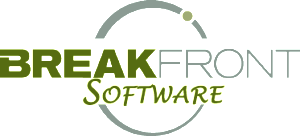
The standard plan calls for a 27″ base and wall cabinet next to a 36″ base and wall cabinet on that wall. What will your salesperson or designer do? Do they solve the problem in the most cost effective manner? Do they care?
Many salespeople will think nothing of shrinking the 36″ base and wall cabinet to 33″ to make up for the difference. If they really cared, on the other hand, the salesperson would look into it and find that shrinking the 27″ base and wall cabinet to 24″ would put an extra $50 in the company’s pocket. Why? Because changing the 27’s to 24’s is going from a 2-door cabinet to a 1-door cabinet and is much more cost effective.
Or, have you ever walked job sites after an installation? Did you find unused materials? Did you ever wonder why the materials weren’t returned to inventory instead of being tossed in the garbage, or perhaps into the installer’s vehicle?
Picture your service staff after an initial kitchen installation. The superintendent or customer calls about a scratch or dent, what happens? Does service just fix it, even if it wasn’t your fault? That’s certainly easier than having an uncomfortable conversation about billing them for the extra filler or skin.
All of these events cost you money. So how do you get your people to be interested in changing? Try appealing to what they care about most – THEIR money.
There are only 2 ways to make employees worry about how to make you more money:
1) Compensate employees based on a job’s final profitability (not just salespeople, but everyone)
Most owners want to do this, but have not taken the time to understand how to effectively track profitability by job. Your investment in creating a process to track and share final profitability by job with the staff will pay huge dividends. It will give your people the motivation and tools required for them to make more money by making YOU more money.
Cabinet Dealers and other industry professionals should beware of a few pitfalls before trying to pay salespeople commissions based on job profitability. Commissions should be based on the actual costs, not the costs the salesperson put on the quote. Salesperson mistakes like missing pieces, forgotten upgrade costs and pricing from outdated catalogs often do not get captured before the commission is calculated and paid. Make sure to capture these costs before paying commissions.
2) Pay employees based on rapid job completion
Many owners are not as familiar with the value of rapid job completion. But let me ask you one question, “Is your happiness affected by cash flow?”
Most owners will answer, “Yes!” but don’t realize by speeding up job completion they speed up their cash flow and enhance their happiness. Once owners make the connection, they often find it tricky to get everyone motivated to speed up job completion.
The first step is getting everyone to understand that turning in final paperwork is a high priority. Salespeople and installers typically “mentally check out” as soon as a job is 90% complete. They go on to the next project and the old job’s final paperwork falls to the bottom of their priority list – delaying your final payment.
Next is finding out how often and why jobs are getting strung out. Are needed materials consistently missing from the job site? If so, why are pieces missing? Were the items never ordered, ordered but misplaced, defective when received or are materials getting damaged at the job site?
With the answers to these questions you can make some real progress. Get the sales, purchasing, warehouse and installers all together. Lay out the problems and ask them for solutions. Motivate them to cooperate by providing them with financial incentives.
Paying incentives for fast job completion keeps paper work a high priority and provides them motivation to solve installation problems before they leave the job. It also takes the owner out of the day to day fire-fighting and puts them into business management.
Finding the right incentive model for you takes analysis and discussion, but is well worth the time. Not only will these two strategies boost your bottom line, but they will attract great employees to your company. The type of employees who hate being compensated just for their time but love earning more by contributing more to your bottom line.

